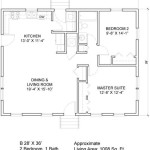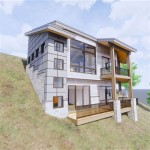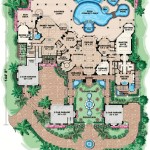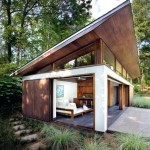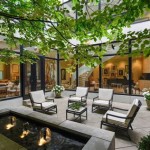Retirement house plans serve as blueprints for designing and constructing homes specifically tailored for the needs and preferences of retirees. They prioritize features that enhance accessibility, comfort, and safety while offering amenities that promote an enjoyable and fulfilling retirement lifestyle. For instance, single-story homes with wide hallways, ramps, and grab bars ensure easy mobility, while spacious living areas and outdoor patios provide ample space for relaxation and entertaining.
As individuals approach retirement, they often seek to downsize from their current homes to smaller, more manageable spaces. Retirement house plans address this need by offering a range of options, from cozy cottages to luxurious villas. These plans incorporate smart design features that maximize space utilization, minimize maintenance requirements, and create a warm and inviting ambiance. Each plan is carefully crafted to provide a comfortable and enjoyable living environment for retirees.
When considering retirement house plans, it is essential to prioritize the following key points:
- Accessibility
- Comfort
- Safety
- Downsizing
- Space utilization
- Low maintenance
- Warm ambiance
- Enjoyable living
By incorporating these elements into your retirement home design, you can create a living space that meets your specific needs and allows you to age in place with comfort, dignity, and independence.
Accessibility
Accessibility is paramount in retirement house plans, ensuring that retirees can navigate their homes safely and independently. This involves designing spaces that are free from physical barriers and obstacles, allowing for easy movement and access to all areas of the house. Key considerations for accessibility include:
Wide Doorways and Hallways: Standard doorways and hallways may not be wide enough for wheelchairs or walkers. Retirement house plans incorporate wider dimensions to accommodate mobility aids, ensuring smooth and unobstructed movement throughout the home.
Ramps and Inclines: Steps and stairs can pose significant challenges for individuals with mobility impairments. Retirement house plans often include ramps or gently sloped inclines to provide alternative access to different levels of the home, eliminating the need for stairs.
Grab Bars and Handrails: Strategically placed grab bars and handrails in bathrooms, showers, and hallways offer additional support and stability, reducing the risk of falls and injuries. These fixtures provide added peace of mind, especially for retirees with balance issues or limited mobility.
Accessible Showers and Bathrooms: Retirement house plans prioritize accessible showers and bathrooms, featuring walk-in showers with grab bars, non-slip flooring, and adjustable showerheads. These modifications enhance safety and comfort, allowing retirees to maintain their independence and dignity during daily routines.
Comfort
Comfort is a central aspect of retirement house plans, ensuring that retirees can enjoy a comfortable and relaxing living environment. Key considerations for comfort include:
- Spacious Living Areas: Retirement house plans prioritize spacious living areas, providing ample room for movement, relaxation, and entertaining guests. Open floor plans and high ceilings create a sense of spaciousness and airiness, contributing to a comfortable and inviting atmosphere.
- Natural Lighting: Natural lighting plays a crucial role in enhancing comfort and well-being. Retirement house plans incorporate large windows and skylights to maximize natural light, creating a bright and cheerful ambiance. This reduces the need for artificial lighting, saving energy and improving mood.
- Well-Designed Kitchens: Kitchens are often the heart of the home, and retirement house plans pay special attention to their design and functionality. Ergonomic layouts, ample storage space, and comfortable seating areas ensure that retirees can prepare meals and entertain guests with ease and comfort.
- Outdoor Living Spaces: Outdoor living spaces extend the living area beyond the confines of the house, providing retirees with a place to relax, enjoy nature, and entertain guests. Patios, decks, and gardens are popular additions to retirement house plans, creating a seamless transition between indoor and outdoor living.
By incorporating these comfort-enhancing features into retirement house plans, retirees can create a living space that promotes relaxation, well-being, and a high quality of life.
Safety
Safety is of paramount importance in retirement house plans, ensuring that retirees can live independently in a secure and protected environment. Key safety considerations include:
- Non-Slip Flooring: Slippery floors can be hazardous for seniors, increasing the risk of falls and injuries. Retirement house plans prioritize non-slip flooring materials throughout the home, especially in areas like bathrooms and kitchens where water is present.
- Adequate Lighting: Good lighting is essential for safety and security. Retirement house plans incorporate ample natural and artificial lighting to ensure that all areas of the home are well-lit, reducing the risk of accidents and falls.
- Security Features: Retirement house plans often include security features such as alarm systems, motion sensors, and secure locks to deter crime and provide peace of mind. These measures help protect retirees from intruders and ensure their safety and well-being.
- Fire Safety: Fire safety is a critical aspect of retirement house plans. Smoke detectors, fire extinguishers, and fire sprinklers are essential safety features that can save lives in the event of a fire. Retirement house plans prioritize fire safety to protect retirees and their homes from potential hazards.
By incorporating these safety features into retirement house plans, retirees can create a living environment that minimizes risks, promotes independence, and provides peace of mind.
Downsizing
Downsizing is a common consideration for retirees looking to transition to a smaller, more manageable home. Retirement house plans often incorporate design features that facilitate downsizing while maintaining comfort and functionality.
Smaller Square Footage: Retirement house plans typically offer a range of square footage options, allowing retirees to choose a home that meets their specific needs and lifestyle. Smaller homes require less maintenance, reduce utility costs, and are easier to navigate, making them ideal for retirees who are looking to simplify their lives.
Open Floor Plans: Open floor plans eliminate unnecessary walls and partitions, creating a more spacious and airy feel. This design approach maximizes natural light and improves flow throughout the home, making it easier for retirees to move around and reducing the feeling of confinement that can come with smaller living spaces.
Multi-Purpose Rooms: Retirement house plans often incorporate multi-purpose rooms that serve multiple functions. For example, a guest room can double as a home office or a den, while a dining room can also be used as a formal living room. This flexible design allows retirees to maximize space utilization and create a home that adapts to their changing needs.
By embracing downsizing in retirement house plans, retirees can create a comfortable and functional living environment that meets their current and future needs while reducing maintenance and expenses.
Space Utilization
Space utilization is a crucial aspect of retirement house plans, as retirees often seek to downsize to smaller homes while maintaining comfort and functionality. Retirement house plans incorporate innovative design features to maximize space utilization and create a sense of spaciousness, even in smaller living areas.
Built-in Storage: Retirement house plans prioritize built-in storage solutions to minimize clutter and maximize space utilization. Custom cabinetry, shelves, and drawers are designed to fit seamlessly into walls, closets, and underutilized spaces, providing ample storage without sacrificing living space.
Multi-Purpose Spaces: As mentioned earlier, retirement house plans often incorporate multi-purpose rooms that serve multiple functions. This flexible design approach allows retirees to maximize space utilization and create a home that adapts to their changing needs. For example, a guest room can double as a home office or a den, while a dining room can also be used as a formal living room.
Vertical Space: Retirement house plans utilize vertical space to create the illusion of height and spaciousness. High ceilings, lofts, and built-in shelves that extend to the ceiling are common features that maximize vertical space, making rooms feel larger and more airy.
By carefully considering space utilization in retirement house plans, retirees can create a comfortable and functional living environment that meets their current and future needs, even in smaller homes.
Low Maintenance
Low maintenance is a key consideration in retirement house plans, as retirees often seek homes that require minimal upkeep and repairs. Retirement house plans incorporate design features and material choices that minimize maintenance requirements, allowing retirees to enjoy their homes without the burden of constant upkeep.
Durable Materials: Retirement house plans prioritize the use of durable materials that can withstand wear and tear, reducing the need for frequent repairs and replacements. For example, fiber cement siding is a low-maintenance alternative to traditional wood siding, as it is resistant to rot, insects, and fire. Similarly, composite decking is a low-maintenance option for outdoor living spaces, as it is durable, fade-resistant, and requires minimal cleaning.
Energy-Efficient Features: Energy-efficient features in retirement house plans not only reduce utility costs but also minimize maintenance requirements. Double-paned windows, ENERGY STAR appliances, and efficient HVAC systems help maintain a comfortable indoor temperature while reducing energy consumption and the need for frequent repairs.
Simplification: Retirement house plans often embrace simplicity in design to reduce maintenance needs. For example, eliminating unnecessary ornamentation, such as elaborate moldings or complex rooflines, reduces the potential for repairs and maintenance issues.
By incorporating low-maintenance features into retirement house plans, retirees can create homes that require minimal upkeep and repairs, allowing them to enjoy their retirement years without the burden of constant maintenance.
Warm ambiance
A warm and inviting ambiance is essential for creating a comfortable and enjoyable retirement home. Retirement house plans incorporate design features and material choices that promote a sense of warmth and coziness, making it a welcoming and relaxing haven for retirees.
Natural Materials: Natural materials such as wood, stone, and brick create a warm and inviting atmosphere in retirement homes. Wood paneling, stone fireplaces, and brick accent walls add a touch of rustic charm and warmth to living spaces. These materials also have excellent insulating properties, helping to maintain a comfortable indoor temperature.
Soft and Textured Fabrics: Soft and textured fabrics, such as velvet, wool, and linen, contribute to a warm and cozy ambiance in retirement homes. Upholstered furniture, curtains, and throws in warm colors and soft textures create a sense of comfort and relaxation. These fabrics also help absorb sound, reducing noise levels and creating a more peaceful living environment.
Adequate Lighting: Lighting plays a crucial role in creating a warm ambiance in retirement homes. Natural light is always preferable, so large windows and skylights are incorporated into retirement house plans to maximize natural light intake. Artificial lighting should be warm and inviting, using soft, diffused light sources such as dimmers, table lamps, and floor lamps.
By incorporating these design elements into retirement house plans, retirees can create a living environment that exudes warmth, comfort, and a sense of well-being.
Enjoyable living
Retirement house plans prioritize features and amenities that enhance the overall enjoyment and quality of life for retirees. These plans incorporate design elements and spaces that promote relaxation, recreation, and social interaction, creating a living environment that is both comfortable and fulfilling.
- Outdoor living spaces:
Patios, decks, and gardens extend the living area beyond the confines of the house, providing retirees with a place to relax, enjoy nature, and entertain guests. These outdoor spaces are designed to be comfortable and accessible, with features such as comfortable seating, shade structures, and easy access from the main living areas.
- Hobby and recreation areas:
Retirement house plans often include dedicated spaces for hobbies and recreation. These spaces can be designed for specific activities, such as painting, woodworking, or reading, or they can be more general-purpose rooms that can be used for a variety of activities. Having a dedicated space for hobbies and recreation provides retirees with an outlet for their interests and a place to socialize with friends who share similar passions.
- Social spaces:
Retirement house plans recognize the importance of social interaction for retirees. They incorporate spaces that encourage social gatherings, such as open floor plans that connect living areas, dining rooms, and kitchens, creating a sense of flow and togetherness. Additionally, many retirement house plans include community amenities, such as clubhouses or recreation centers, where retirees can participate in organized activities and events.
- Smart home features:
Smart home technology can enhance the enjoyment and convenience of retirement living. Retirement house plans incorporate smart features such as voice-controlled lighting, automated thermostats, and security systems. These features can make daily tasks easier, provide peace of mind, and allow retirees to live independently for longer.
By incorporating these features and amenities into retirement house plans, retirees can create a living environment that supports their physical, social, and emotional well-being, allowing them to enjoy a fulfilling and enriching retirement.
/bnn/media/media_files/5d4c49a548767f362fe6aad25d921a6a09676100c82866847121d4b08acf9e77.jpg)









Related Posts

